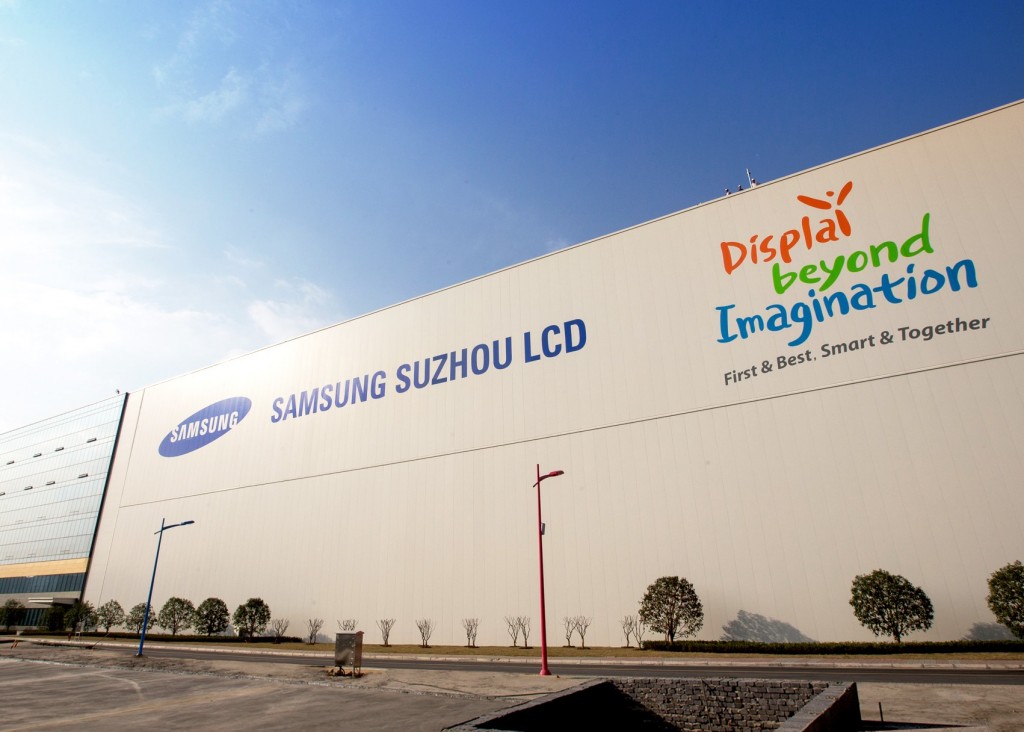Samsung Display
Samsung pulls out of LCD panel market to bet on quantum dot OLED
By Aug 31, 2020 (Gmt+09:00)
2
Min read
Most Read
Samsung shifts to emergency mode with 6-day work week for executives


CJ CheilJedang to sell feed, livestock unit for $1.4 bn


Samsung Electronics' key M&A man returns; big deals in the offing


Affinity to buy SK Rent-a-Car at $572 mn, more deals expected


Keppel REIT to sell Seoul-based prime office T Tower


Samsung Display Co. Ltd. has sold its LCD panel plant in China to China Star Optoelectronics Technology (CSOT) for $1.08 billion, withdrawing from the low-margin liquid crystal display (LCD) market.
The pullout is part of SamsungŌĆÖs efforts to concentrate on high-value organic light-emitting diode (OLED) panels to which the technology giant will add quantum dot (QD) technology to boost screens' color performance.
Under the agreement with CSOT, the display maker owned by Chinese electronics company TCL Technology has acquired Samsung DisplayŌĆÖs two units running the LCD plant in Suzhou, according to TCL TechnologyŌĆÖs regulatory filing on August 28.
CSOT, ChinaŌĆÖs No.2 display manufacturer, already took an additional 10% stake in one of the units. With the acquisition, it will expand its presence in the large-size LCD panel market.

Profit margins from LCD panels have been declining as Chinese manufacturers, led by BOE and CSOT, are rapidly increasing their share with cheaper panels.
Last year, Chinese┬Āpanel makers accounted for 40.4% of the global market for large-size LCDs, or┬Ā larger than 9 inches, according to Omdia, a technology research company. Taiwanese and South Korean companies came second and third with shares of 31.1% and with 23.9%, respectively.
South Korea's LG Display Co. Ltd. runs an LCD panel plant in Guangzhou, China. But this year it plans to stop producing LCD panels used for TVs to move into the higher-value OLED business.
In November 2019, Samsung Display announced a five-year plan to invest 13.1 trillion won ($11 billion) to roll out QD OLED next-generation display panels. It is building the production lines in South Korea with an aim to mass produce them from the second quarter of next year.
SamsungŌĆÖs QD OLED uses blue OLED as a light emitter with the QD color filter layer placed above┬Āto improve color performance.
For its part, LG Display also produces similar displays, but uses white OLED as an emitting source.
As a next-generation model, Samsung Display is developing QD nanocrystal displays, which also come with QD color filters, but use micro-LED as a lighting source. They consume less energy than conventional OLEDs and resolve the problem of burn-in, when a persistent part of the image remains on the screen even after the screen is turned off.
Write to Hyung-suk Song at click@hankyung.com
The pullout is part of SamsungŌĆÖs efforts to concentrate on high-value organic light-emitting diode (OLED) panels to which the technology giant will add quantum dot (QD) technology to boost screens' color performance.
Under the agreement with CSOT, the display maker owned by Chinese electronics company TCL Technology has acquired Samsung DisplayŌĆÖs two units running the LCD plant in Suzhou, according to TCL TechnologyŌĆÖs regulatory filing on August 28.
CSOT, ChinaŌĆÖs No.2 display manufacturer, already took an additional 10% stake in one of the units. With the acquisition, it will expand its presence in the large-size LCD panel market.

Profit margins from LCD panels have been declining as Chinese manufacturers, led by BOE and CSOT, are rapidly increasing their share with cheaper panels.
Last year, Chinese┬Āpanel makers accounted for 40.4% of the global market for large-size LCDs, or┬Ā larger than 9 inches, according to Omdia, a technology research company. Taiwanese and South Korean companies came second and third with shares of 31.1% and with 23.9%, respectively.
South Korea's LG Display Co. Ltd. runs an LCD panel plant in Guangzhou, China. But this year it plans to stop producing LCD panels used for TVs to move into the higher-value OLED business.
In November 2019, Samsung Display announced a five-year plan to invest 13.1 trillion won ($11 billion) to roll out QD OLED next-generation display panels. It is building the production lines in South Korea with an aim to mass produce them from the second quarter of next year.
SamsungŌĆÖs QD OLED uses blue OLED as a light emitter with the QD color filter layer placed above┬Āto improve color performance.
For its part, LG Display also produces similar displays, but uses white OLED as an emitting source.
As a next-generation model, Samsung Display is developing QD nanocrystal displays, which also come with QD color filters, but use micro-LED as a lighting source. They consume less energy than conventional OLEDs and resolve the problem of burn-in, when a persistent part of the image remains on the screen even after the screen is turned off.
Write to Hyung-suk Song at click@hankyung.com
Yeonhee Kim edited this article
More to Read
Comment 0
LOG IN







